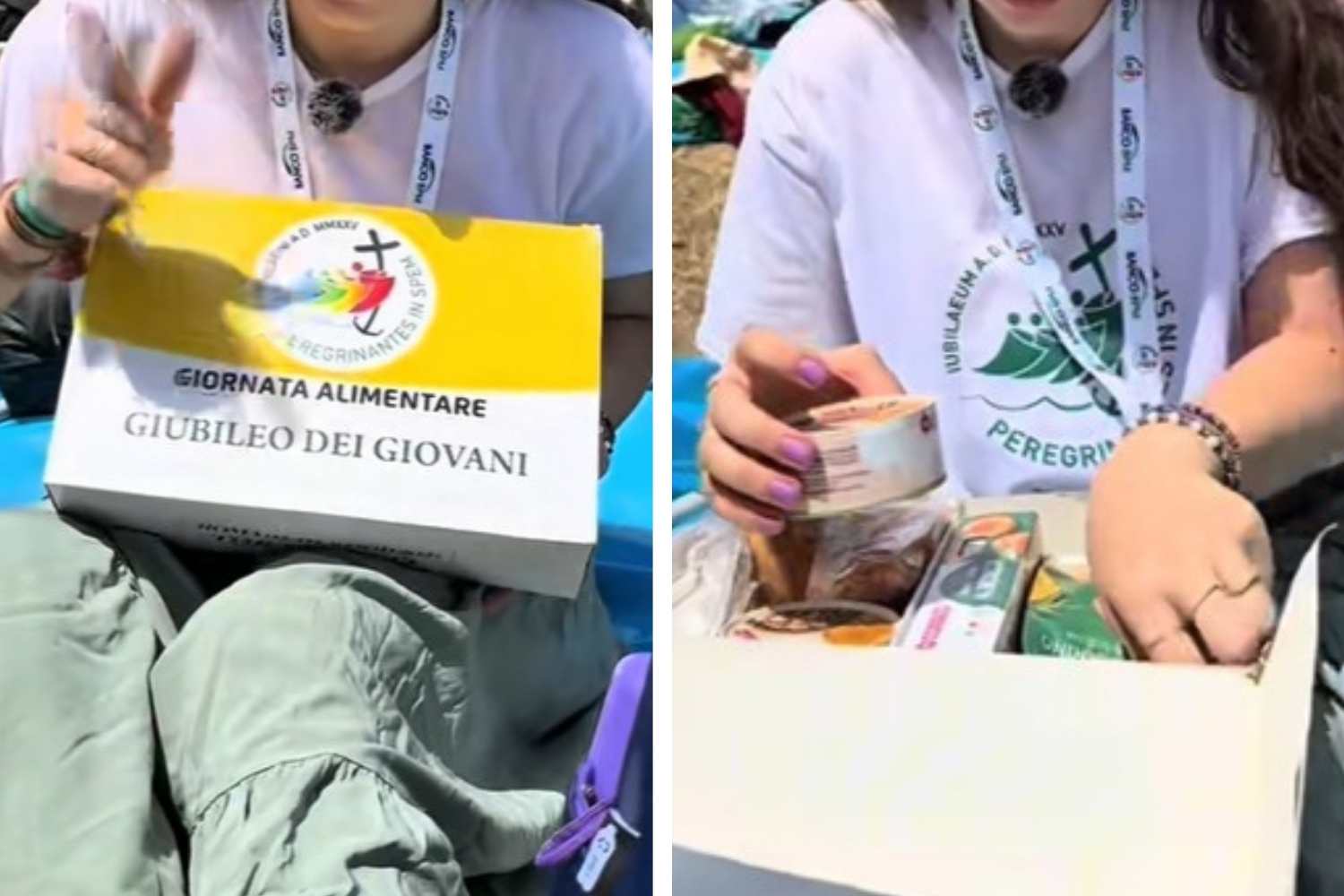Rome's Youth Jubilee sparked online outrage over food waste — but behind the scenes, volunteers saved most of the uneaten meals for those in need.

In the days following the Youth Jubilee vigil and mass at Tor Vergata — a gathering that drew over 1.5 million pilgrims — social media lit up with a wave of concern. Photos and videos spread like wildfire, showing half-full lunch boxes abandoned on the grass: still-wrapped sandwiches, untouched fruit juices, factory-sealed cookies. The immediate reaction? Outrage. “A massive waste of food,” many cried online.
The images, while striking, only told part of the story.
A box full of calories and controversy
Each pilgrim had paid €35 (about $38) for a complete meal kit. That fee covered not just the food, but also insurance and a jubilee kit. The box was designed to sustain participants through Saturday night dinner, Sunday breakfast, and lunch — a logistical challenge for any event of this size.
According to footage and firsthand accounts, the contents were pretty consistent:
- three small apricot juices (just over 3.3 fl oz each),
- two tins of tuna-based salads — one with beans, the other with peas —
- a packet of rosemary bruschetta.
- chocolate cookies,
- two pre-packaged croissants,
- a salami sandwich, and a ham-and-cheese sandwich.
- a sealed cup of fruit salad and
- a disposable cutlery set.
That’s a lot of packaging. And a lot of calories.
So when the crowd dispersed and those boxes were left strewn about, it did look bad — disheartening, even — especially in an era where global hunger and food insecurity remain painfully real.
But there’s more to the story.
Where the food really went
The truth is, much of that uneaten food didn’t go to waste. In fact, a well-organized effort kicked in almost immediately to recover and redistribute the leftovers.
Dozens of volunteers, many from organizations like Caritas, Banco Alimentare, and other local charities, stepped in to salvage what was still edible. The priority was the perishable items, particularly the sandwiches, which were collected and rerouted swiftly.
“We immediately took charge of the sandwiches and panini,” Caritas representatives told Roma Today.
“These are perishable and need to be consumed quickly. They’ll be distributed in our soup kitchens, as well as at the solidarity emporium in Ponte Casilino.”
As for the non-perishables — the canned goods, cookies, juices, and packaged snacks — they’re being stored and sorted. Starting in September, those products will be handed out to vulnerable families, included in food parcels, or stocked in solidarity grocery shops across the diocese.
In short, what looked like chaos was actually a tightly coordinated food recovery operation. This time, the system worked. There was no dumpster full of croissants, no landfill piled high with apricot juice cartons.
Lessons from the lawn
Large-scale events like this — especially religious ones involving massive crowds and long hours in the sun — are notoriously hard to cater. Appetite is unpredictable. Not everyone likes tuna and peas. But what matters is what happens next.
And here, it seems, Rome got it right. Thanks to quick thinking and pre-existing networks of food solidarity, the leftovers found new homes and new purposes.
In a world where nearly one-third of all food is wasted, even small victories like this matter. Especially when they remind us that even after a mass gathering of over a million people, it’s possible to leave not just the grass cleaner, but the conscience too.
Source: Roma Today
